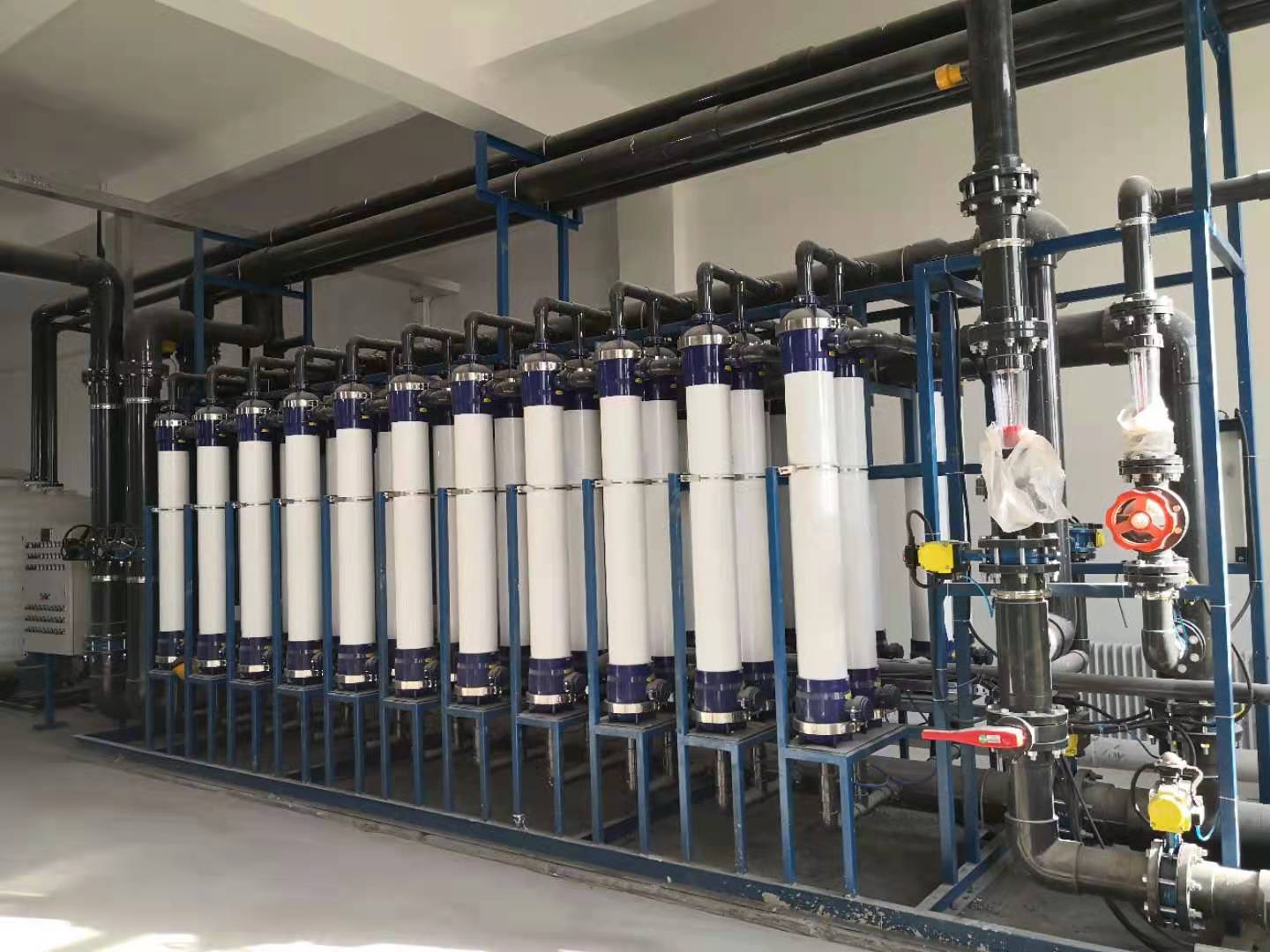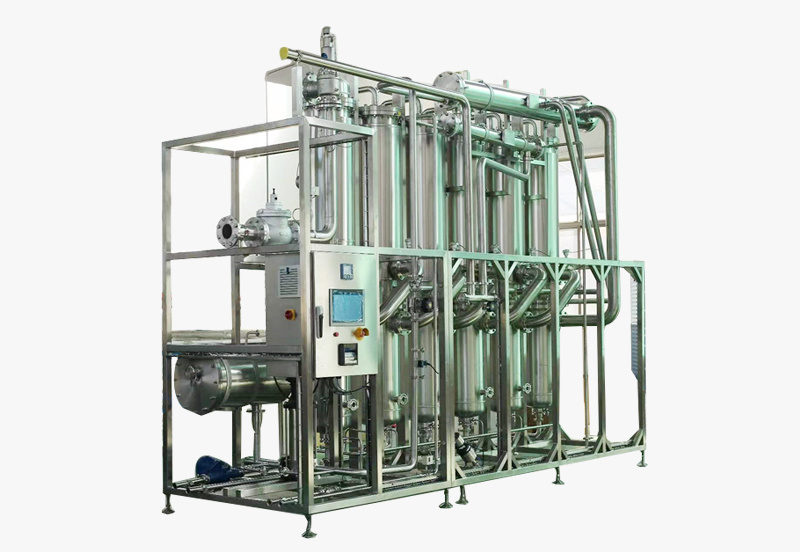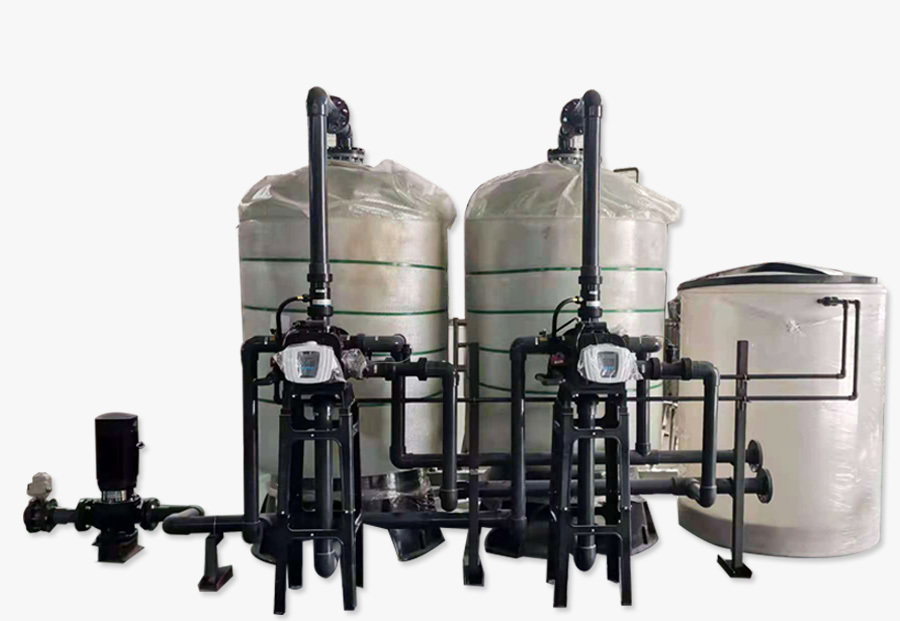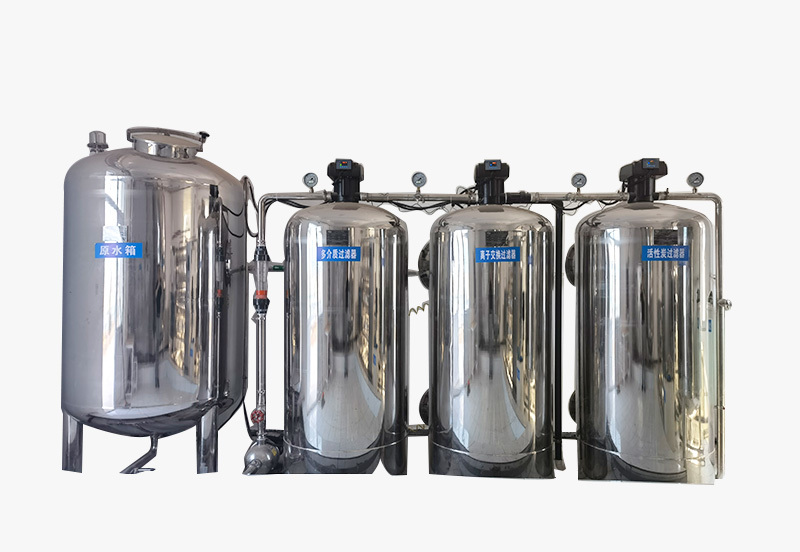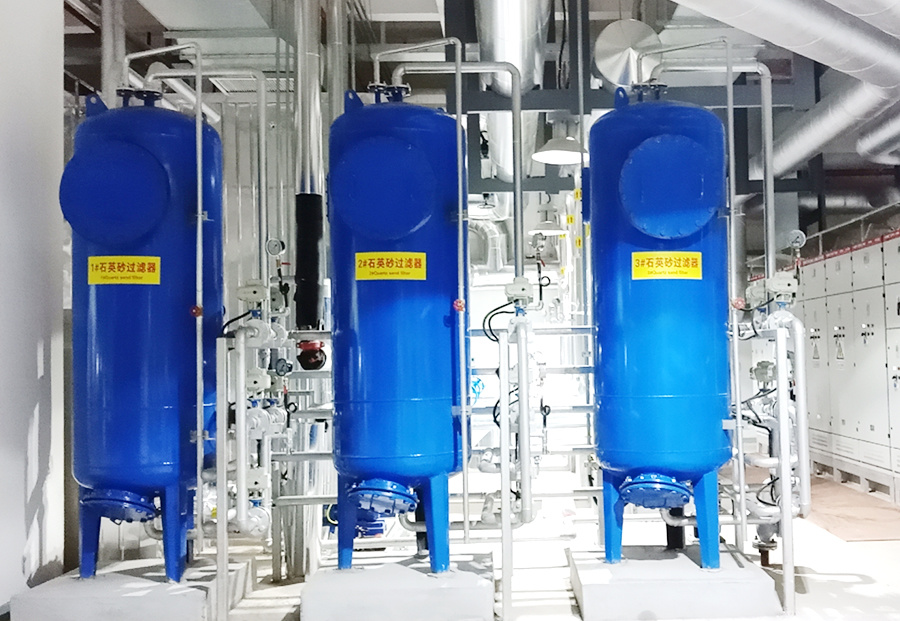How to deal with reverse osmosis membrane blockage
Category:
Time of issue:2021-11-30
1. Concentration Polarization
In reverse osmosis desalination systems, the selective permeability of the membrane causes water molecules to continuously pass through the membrane from the high-pressure side, while solute molecules remain in the original solution. This creates a concentration difference between the solution on the membrane surface and the inlet solution. In severe cases, a high concentration gradient is produced, a phenomenon known as concentration polarization. Concentration polarization increases the osmotic pressure of the solution, reduces the effective driving force, and causes a decrease in water permeability and desalination rate.
2. Inorganic Salt Scaling
During reverse osmosis, salts with low solubility products, such as CaCO3, CaSO4, BaSO4, SrSO4, CaF2, and SiO2, may precipitate due to concentration exceeding their solubility product, forming deposits on the membrane surface or scale in the water intake channel.
3. Adsorption Pollution
Certain well water sources within the brackish water range generally contain ferrous and manganese ions with a certain reducibility. The main cause of membrane fouling from these sources is the formation of colloidal particle fouling by iron, aluminum, and manganese on the membrane surface. When O2 enters the feed water containing Fe2+, ferric carbonate and ferric silicate are formed in high-alkalinity water sources. With the addition of reducing bacteria, iron scaling forms faster, as well as colloidal iron caused by iron flocculant conversion. The characteristic manifestations of metal pollution are decreased water production and increased pressure difference.
4. Formation of Biological Sludge
Water sources from surface water and wastewater often encounter problems with biological sludge. When the membrane surface is covered with vigorous microorganisms, the salts removed by the membrane will be trapped in the viscous layer and are not easily washed away by water. This provides abundant nutrients for microbial reproduction. At the same time, antiscalants and water softeners added during pretreatment of reverse osmosis feed water can also promote microbial growth.
5. Colloidal Pollution
Groundwater and surface water contain substances such as iron, aluminum, silicon, and organic matter. These substances, along with coagulants, flocculants, and antiscalants added during pretreatment, form colloids that deposit on the membrane surface, causing colloidal pollution. Colloidal pollution is difficult to treat because it carries the same charge, is relatively stable, and is not easily settled. However, it is retained on the membrane surface during RO membrane water filtration, forming hydrates that easily pollute the membrane, leading to a decrease in water flux. This is usually evaluated using the pollution index (SDI). Generally, when SDI <3, no such fouling occurs on the membrane surface; when SDI >3, fouling will occur.
6. Water Hammer Phenomenon
In reverse osmosis systems, due to unreasonable design, a large amount of air may exist in the membrane shell during the initial commissioning stage. When the solution to be treated instantly enters the membrane shell, the air, being compressible, cannot be completely exhausted instantly. When the air in the membrane shell reaches a certain pressure, it will suddenly burst and release, causing the reverse osmosis membranes to collide, squeeze, and move within the membrane shell, producing a "water hammer" phenomenon. In reverse osmosis systems, the harm of water hammer lies in causing irreversible damage to the reverse osmosis membrane elements. Of course, this phenomenon can also be avoided through improved design.
7. Suspended Particulate Matter
Security filters may leak filter media, corrosion fragments, and foreign objects (such as small core velvet threads) due to "short circuits" or defects, or incomplete rinsing during the initial use of reverse osmosis, which may cause membrane element contamination, blockage of the water intake channel, and the formation of amorphous precipitates on the membrane surface. However, this situation is rarely encountered.
8. Pollution Caused by Other Factors
Hydrocarbons and silicone-based oils and greases covering the membrane surface cause membrane pollution; hydrolysis of the membrane, erosion by organic solvents and oxidizing substances, etc., can also cause changes in the nature of the membrane material.
Tags:
-- Recommended --
Shijiazhuang Tianwang Environmental Protection Technology Co., Ltd.
Shijiazhuang Tianwang Environmental Protection Technology Co., Ltd. is a high-tech enterprise specializing in the research and development, manufacturing and sales of water treatment equipment.
Contact Information
Production address: No. 9, Fengchan Road, Economic and Technological Development Zone, Shijiazhuang City
Office Address: 25th Floor, Block C, No. 310 Changjiang Avenue, Shijiazhuang High-tech Development Zone
Contact Number:
0311-89272359 0311-68039237
Enterprise Email:
twhbkj@163.com
Website: en.sjztwhb.com


